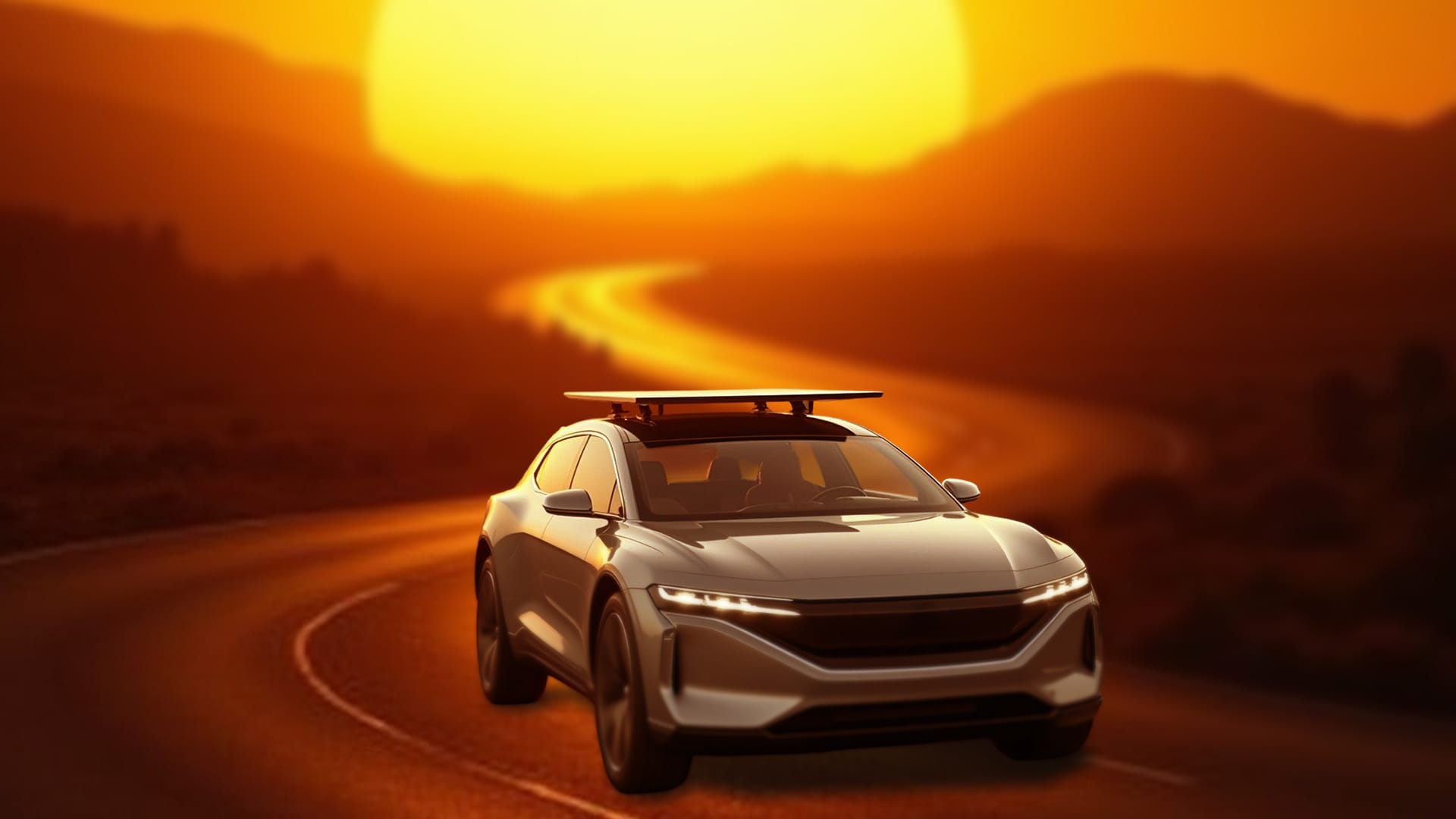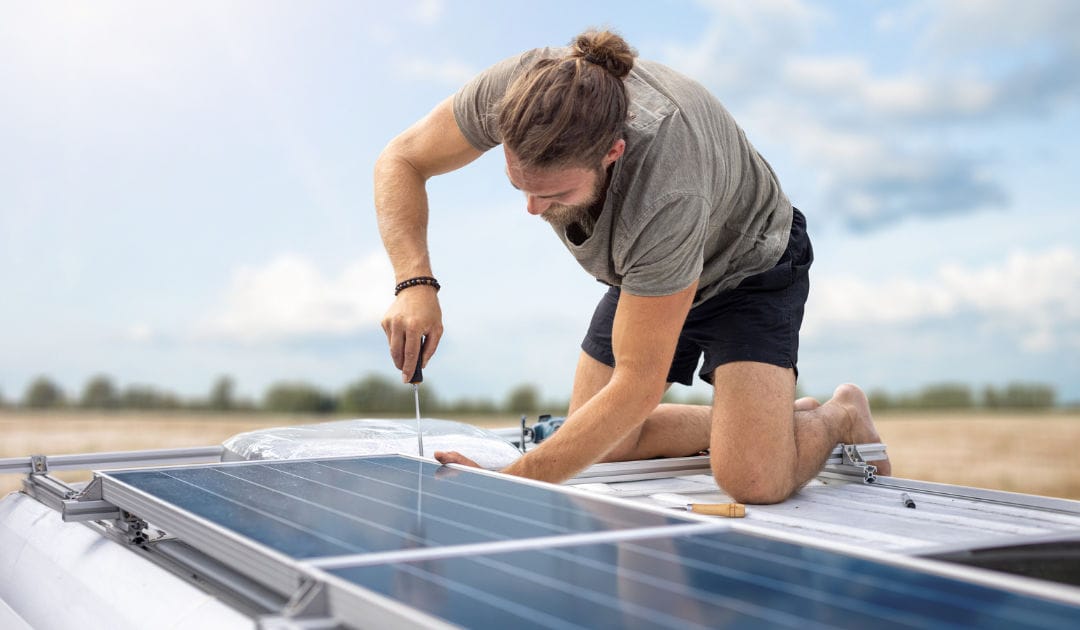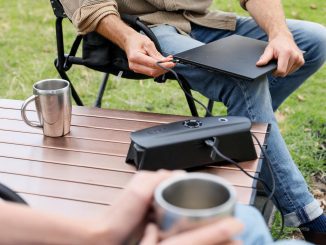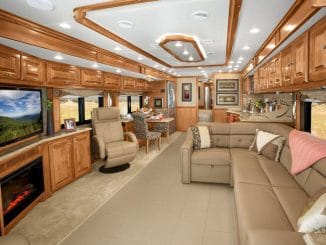It’s not that people didn’t want solar-powered RV setups in the past. It’s that the hardware simply wasn’t up to the task. But that’s changed dramatically.

Modern solar kits, like the Jackery Solar Generator 3000 Pro or Bluetti’s AC200MAX, now offer lithium iron phosphate (LiFePO₄) battery systems with over 3,000 charge cycles. Combined with ultra-efficient monocrystalline panels and MPPT (maximum power point tracking) controllers, these setups squeeze every usable watt from the sun.
You no longer need full-sun exposure or days of charging to power your setup. Many travelers report being able to run fridges, lights, fans, and even laptops for days on a single charge, topped off quietly as the sun rises. Some are even wiring their entire Class B rigs to run exclusively on solar and battery without needing propane or shore power.
Exploring Farther, Staying Longer
The appeal is obvious: fewer limitations and more serenity.
Solar power decouples RVers from the traditional infrastructure of campgrounds and crowded parks. You’re free to boondock in remote BLM lands, camp beside alpine lakes, or tuck into desert canyons without worrying about noise ordinances or gas refills.
And because today’s systems are modular, even smaller RVs and vans can harness meaningful solar capacity. Pop-up rigs with 200W folding panels and a 1kWh battery can easily support light daily use, while fifth wheels and large motorhomes can mount 800W+ rooftop arrays and multi-kilowatt battery banks for near-indefinite off-grid living.
The result? RVers are no longer just road tripping, they’re living outdoors on their own terms, supported by the sun.
Smarter Charging and Monitoring
Battery anxiety used to be real. But thanks to Bluetooth monitoring apps, smart controllers, and inverter-integrated systems, managing solar power in 2025 is nearly hands-off.
EcoFlow and Renogy offer mobile apps that track energy input, consumption, and system health in real time. You can set charging priorities, automate device shutoffs, and even diagnose faults from your smartphone. Victron’s systems go a step further with smart networking for hybrid solar-generator setups.
Some high-end RVs now ship with full touchscreen control hubs, letting users monitor solar yield, set usage schedules, and check power stats at a glance, bringing a Tesla-like UX to backcountry boondocking.

The Portable Revolution – solar-power
Rooftop panels are great for large setups, but what’s really exploded is portable solar. Folding panels with built-in handles, waterproof connectors, and high-efficiency cells have turned solar into a plug-and-play accessory.
Need to park in the shade? Unfold your 200W panel and place it in the sun, running an extension to your battery bank. Want to charge on the beach or in a parking lot? Kickstand-style arrays let you tilt toward the sun with optimal angle.
This modularity is empowering more spontaneous travel. RVers don’t have to overthink campsite alignment or rely on high-sun conditions. And for those just getting started, a single portable panel paired with a power station is a low-commitment entry point.
Entertainment Without Compromise
One of the more underrated benefits of modern solar setups is how well they support digital entertainment. In today’s connected rigs, it’s not uncommon to see 12V smart TVs, sound systems, streaming boxes, and even compact gaming consoles onboard.
Thanks to efficient inverters and power-optimized devices, you can easily run a night of Netflix or YouTube off battery without making a dent in your energy reserves. In fact, many portable solar systems now include USB-C PD ports capable of charging laptops and tablets directly, bypassing conversion losses.
Interestingly, this capability has caught the attention of lightweight web and iGaming developers. The sportsbook BetZillo, for example, has optimized its mobile platform for ultra-low power devices, perfect for off-grid users who still want a quick round of slots or to check sports odds while stargazing. It’s another example of how solar-powered rigs are enabling fully connected lifestyles, even in the wild.

Sustainability That Actually Pays Off
There’s also the bigger picture. Traditional RV setups rely heavily on propane and gasoline generators, noisy, emissions-heavy, and expensive. Swapping to solar reduces both your footprint and your fuel bill.
A modest solar setup may cost $1,000–$2,500 upfront, but over the course of a year, that can offset hundreds in generator fuel and campground hookups. Factor in longer battery life, less wear on engines, and fewer trips to refill propane tanks, and the investment pays for itself—financially and environmentally.
And for eco-conscious travelers, the silent running of solar power just feels right. No noise pollution, no fumes, no guilt. Just you, your rig, and the open road.
Looking Ahead- solar-power
The next wave of solar tech and solare powered gear will push even further toward full autonomy and sustainability. We’re already seeing solar tiles that double as walkable surfaces, water-from-air generators, and AI-powered route planners that adapt to weather and vehicle diagnostics in real time.
With the growing synergy between hardware, software, and mobility, the notion of truly remote living is no longer extreme, it’s an achievable lifestyle.
Whether you’re a weekend warrior or a full-time nomad, the gear coming out now isn’t just upgrading the adventure, it’s redefining it entirely.



